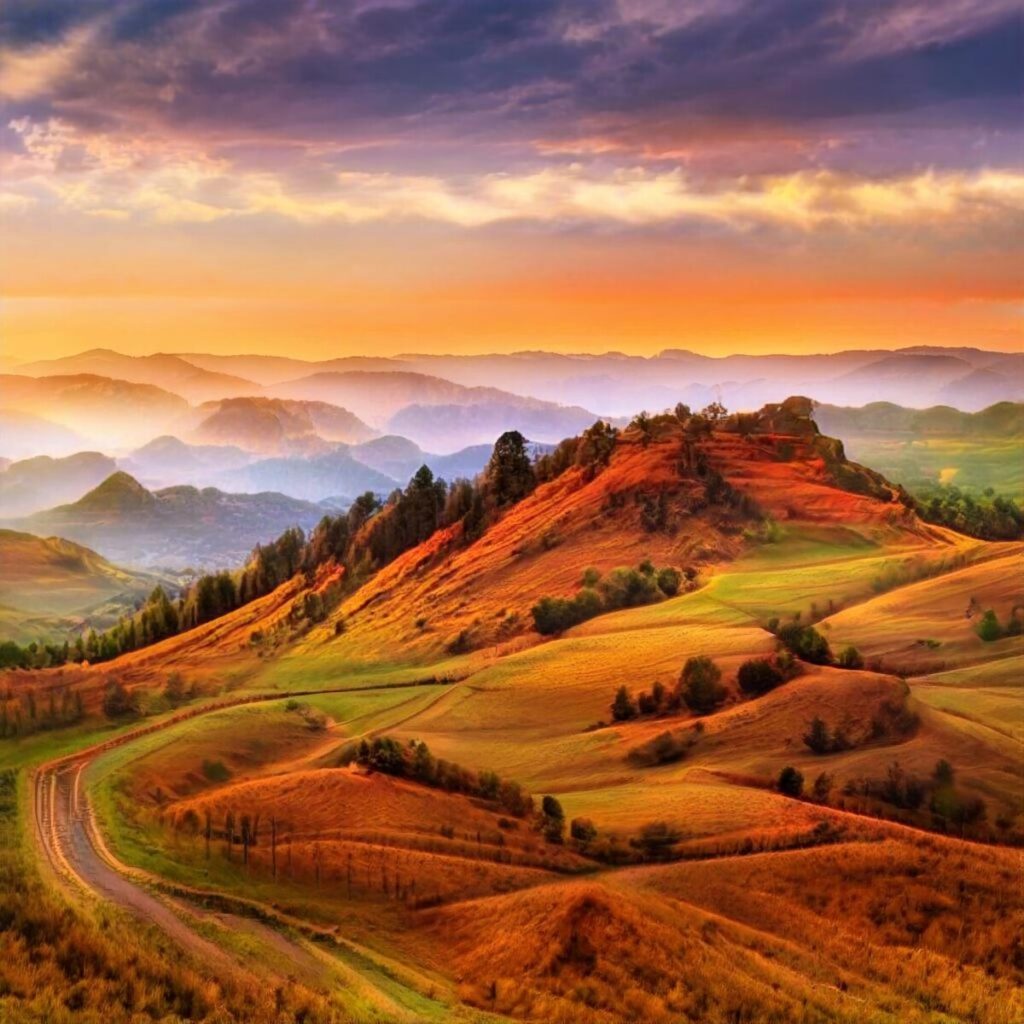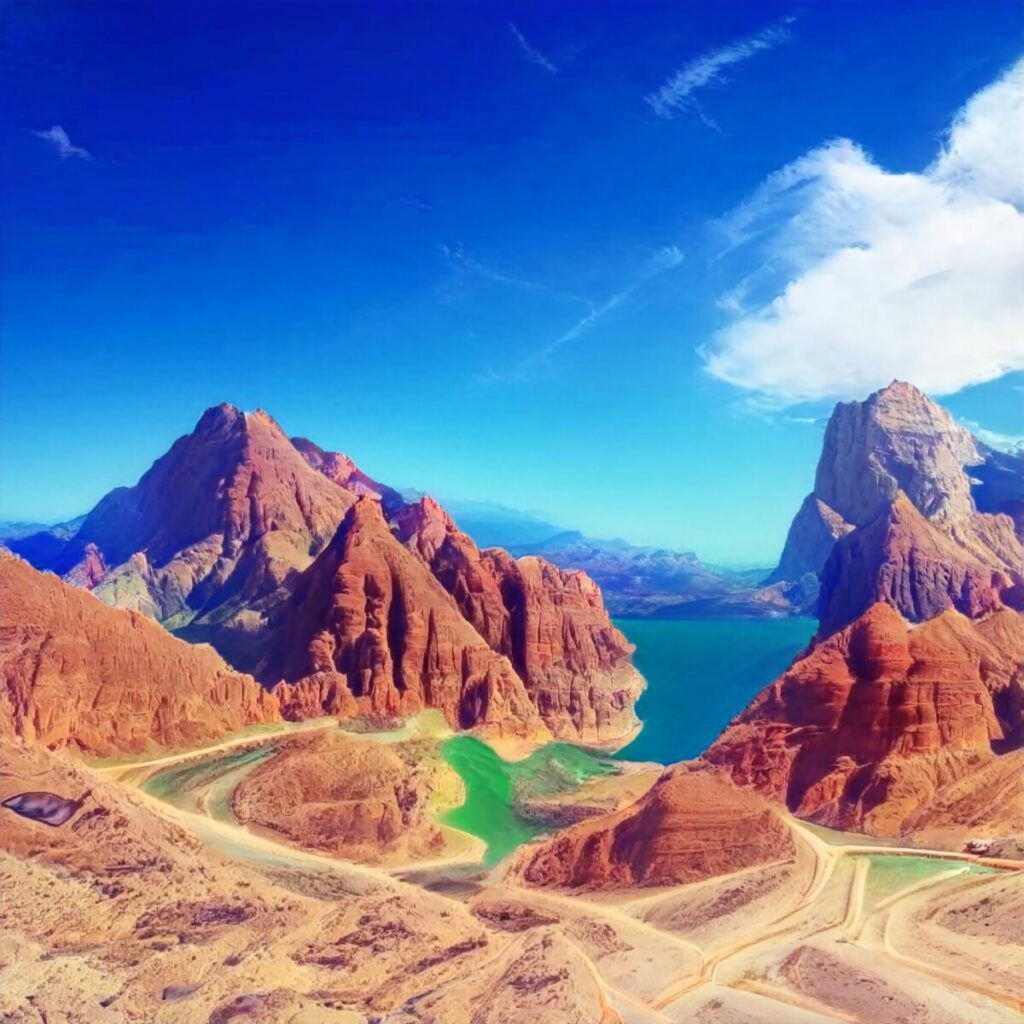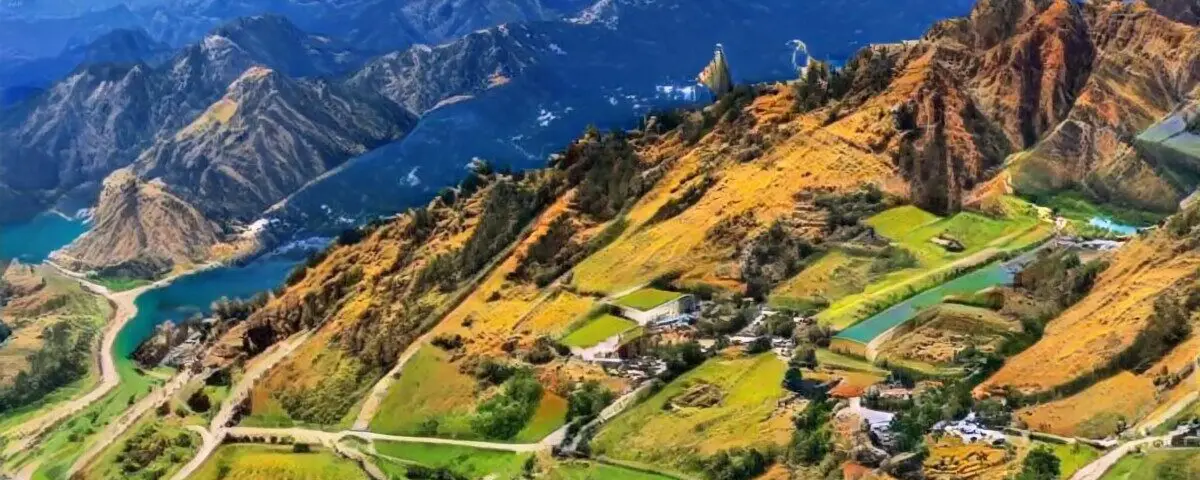If I stood at the base of the towering mountains of Central Asia, I would likely ponder this question. Does the Silk Road still exist? For centuries, this ancient network of trade routes played a vital role in connecting the East and West. It facilitated commerce and cultural exchange. However, much of the traditional Silk Road has faded into obscurity through the passage of time, wars, and natural disasters.
Does the Silk Road still exist? As a traveller and history enthusiast, I was curious about the remnants of the fabled route. What research uncovered was astounding. Although the traditional Silk Road disappears, a new Silk Road has emerged, promising to reshape the global economic landscape.
As we journey through history and space, we examine the significance and legacy of the Silk Road.
- We explore the state of the traditional Silk Road and the challenges it faces in terms of preservation.
- We then delve into the new Silk Road, discussing its expansion, benefits, and challenges.
- Lastly, there’s an unexpected surprise – the rediscovery of lost Silk Road routes.
As we unravel the mysteries of the Silk Road it reveals some surprising facts.
Word Stock Images
The Traditional Silk Road

The ancient Silk Road is one of the great misnomers in history. Rather than a single road, it was a series of routes over land and sea, connecting the East with the West. It was not commonly referred to as the Silk Road until the 19th century. Routes existed long before it was developed, and silk was known to ancient Greeks in the 4th century BCE.
Who Founded the Silk Road.
During the Han Dynasty (206BCE – 220CE) China officially opened trade routes with the West. In 138 BCE, a man called Zhang Qian was sent by Emperor Wu to explore the tribes to the west of China. His maps were used to develop existing routes and expeditions. And thus began a cultural exchange between empires, countries, and tribes.
There were North-South trade routes in Asia during the Bronze Age, 1500 BCE, which included parts of modern-day Russia. Other routes and roadways were forged westward over the millennia, which were expanded and improved. They included the Royal Road from Persia to the Mediterranean Sea in the 5th century BCE.
These roads eventually evolved into the thousands of miles of trade routes that extended from East China, Mongolia, India, Indonesia to the Middle East, East Africa, and Europe.
Who traveled on the Silk Road.
Few people ever travelled the entire route from China to Europe. Traders and merchants used middlemen much as they do today who were responsible for moving products from one territory to another. Some of those products included:
From West to East

- Horses and saddles
- Grapes and vines
- African animals
- Glassware
- Woollen textiles
- Gold, silver, and other metals
- Slaves
- Camels
From East to West
- Jade and other precious stones
- Tea and spices
- Silk
- Dyes
- Porcelain
- Rice
- Paper
- Gunpowder
Travel and exploration to unfamiliar territories led many along the Silk Road. The Venetian explorer Marco Polo (1254-1324 CE) famously travelled to India and China and his experiences were captured in the book The Travels of Marco Polo. The book has inspired many others to follow in his footsteps.
After 1,500 years of changing empires, dynasties, and political borders, the Ottoman Empire closed trade with the West in 1453 BCE. However, Westerners developed a taste for the luxury goods of these distant exotic lands and were determined to find new routes to the East via the seas. Thereby initiating a new Age of Exploration.
The Silk Road opened cultural exchange that spanned three continents. Exchanges in:
- Beliefs such as Buddhism, Christianity, Zoroastrianism and Islam.
- Languages such as Persian, Chinese, Sanskrit, Arabic, Turkic, Sogdian and Greek
- Art, craft and technology
- Medicine and science
- Engineering and architectural skills
As well as many foods, plants, animals, natural resources, and diseases.
The Silk Road’s influence

The Silk Road influenced the course of history in many ways. For example, the larger faster horses of the West helped the Mongols build their huge empire. And the introduction of gunpowder from the East changed the way wars were fought and won.
Cities, governments, and entrepreneurs grew rich and powerful. The world would never be the same again.
Does the Silk Road still exist?
While the vast network of routes covered a lot of territory, most of the ancient Silk Road has fallen into disrepair, been built over or disappeared. However, some pathways and roads are still used for commerce. And connections between towns and cities have grown out of these original routes.
The paved highway that connects Pakistan and the Uygur region of Xinjiang in China was once part of the Silk Road. Cities such as Xi’an and Kashgar in China, Samarkand in Uzbekistan, Bukhara in Tajikistan, and Tashkent in Kazakhstan, continue to be important centres of trade and commerce in Central Asia.
The UNESCO Silk Roads Programme
While many of the physical routes may be lost, the UNESCO Silk Roads Programme aims to revive and continue the Road’s legacy through the magic of the Internet. The programme encourages young people to connect between countries and share their contemporary perspectives through photography competitions. There are research grants and cultural interactions in science and technology, religion and spirituality, arts, music, craftsmanship, literature, sports and more.
As well as cultural preservation, new economic and trade opportunities are being developed along the routes of the ancient Silk Road through the Belt and Road Initiative.
The New Silk Road
China’s Belt and Road Initiative, proposed by President Xi Jinping in 2013, aims to connect countries around the world through global infrastructure and trade. This big initiative by China involves 150 countries, 60% of the world’s population and a third of global GDP and trade.
Chinese goods travel from Shenzhen, China to Deutschberg, Germany, which serves as the largest inland port in the world and is central to China’s overland ambitions. These goods arrive in Deutschberg before being distributed across the continent to 42 European countries.
The initiative involves upgrading transportation methods and ports to accommodate the massive flow of products, such as Shenzhen’s harbour, which sees 25 million containers pass through each year. Landlocked countries, like Kazakhstan, are being transformed into giant inland ports, as they were key locations on the ancient Silk Road and remain crucial crossroads in Eurasia.
Expansion of trade and infrastructure
The Belt and Road Initiative has stimulated new economic and trade opportunities along the Silk Road’s historical routes. We’ve moved from camel trains to high-speed electric ones, and from busy medieval ports of merchant boats to giant port cities of cargo ships and crane structures. Now hundreds of containers filled with products are in constant motion, being shipped around the world daily.
The Belt and Road initiative also led to the development of new trade routes and corridors, such as the China-Pakistan Economic Corridor and the New Eurasian Land Bridge, which have the potential to transform regional trade patterns and economic development.
These initiatives have facilitated greater trade and investment flows between China and other countries, opening up new markets for Chinese goods and services and providing opportunities for foreign businesses to access the Chinese market.
The original initiative was intended to link Asia and Europe through infrastructure but has since grown to include Oceania, Latin America and 35 African countries. Their focus in these areas is on seaports, hydropower, carbon-based power, and sanitation among others.
Benefits and challenges of the New Silk Road
Benefits
There is little doubt the Belt and Road Initiative will provide much-needed infrastructure in developing countries. Other benefits include:
- Increased connectivity and trade between countries and regions.
- Increased access to energy resources, including renewable energy, improving energy security and reducing reliance on fossil fuels.
- Promotion of cultural exchange and understanding between participating countries.
- Job creation and economic advancement for local communities.
- Increased investment and funding for developing countries which will potentially reduce poverty and improve standards of living.
- Increased regional stability and security through economic cooperation.
Critics view the initiative as a Trojan horse for Chinese development and expansion. India, Malaysia, and Sri Lanka have expressed concerns despite the much-needed upgrades and improvements to their infrastructure and transport systems. They are pushing for more transparency and sustainability.
Challenges
The challenges include:
- The high cost of infrastructure projects and the long-term implications of growing debts to China.
- Debt and land acquisition issues, which could plunge some African countries deeper into poverty while others benefit.
- 10,000 Chinese-owned firms operating in Africa, mostly privately owned, which often export workers instead of using local employment.
- Concerns about China’s transparency and adherence to principles such as financial sustainability, environmental protection, and protection of local people’s interests.
To address these challenges, governments, NGOs, and international organisations must work together to preserve the Silk Road’s cultural heritage and promote sustainable development.
Discovery of lost Silk Road routes – The Unexpected Surprise
Archaeologists continue to find evidence of lost routes along the ancient Silk Road that offer insights into its rich history and cultural significance.
More than one Unexpected Surprise
Did the ancient trade route pass through Tibet?
2016 discoveries of tombs located 4,500m above sea level on the Quinghai-Tibet Plateau contained silk, a gold mask, ceramic and bronze vessels, and tea buds. These discoveries show that traders didn’t just follow the routes along the foothills, but also ventured up along the high altitudes of the mountains.
Ancient Bronze mirrors discovered
They excavated bronze mirrors dating back 2,000 years in a cemetery in northwest China. Many of the mirrors incorporate decorative elements from India, Persia, and Egypt, indicating trade with these countries in this area.
Oldest evidence of Silk

Remains of silk in 8,500-year-old tombs suggest that silk production in China goes back much further than previously thought. The fabrication of silk was a closely guarded secret in China. While they were happy to sell the finished product, how they made it was unknown outside China for many centuries.
The Importance of New Discoveries
Discoveries related to the ancient Silk Road have significant implications for future research, tourism, and preservation work. The findings provide a deeper understanding of the cultural significance of lesser-known regions. This knowledge can promote cultural exchange, cooperation, economic development, and tourism.
Despite the COVID-19 pandemic’s negative impact on tourism (2019-2022), the Silk Road remained a popular destination, attracting tourists. The Central Asian countries, with their stunning natural beauty, local traditions, and architectural treasures, can benefit from longer-term tourism. To capitalise on this, the countries visited must upgrade infrastructure, expand tourism services, and improve marketing and management.
Many countries along the Silk Road joined forces to establish a unified brand name, Visit Silk Road, and create a web portal for package tours. The modern-day tourist can:
- Experience camel rides across sand dunes
- Discover towns and tea houses
- Explore Megao caves used by Buddhist monks
- Visit livestock markets in Kashgar
- Marvel at the rainbow-coloured sandstone mountains of Zhangya.
They can learn so much more about the places that reveal the rich history and culture of this ancient trade route.
Photo: Kier in Sight/Unsplash.
Future implications
“We must learn from the exchanges that took place along the Silk Roads. These exchanges weaved connections between peoples and cultures across Asia and Europe. With this in mind, we can work to foster much needed dialogue and mutual respect going forward.”
Quote – UNESCO’s General Director Audrey Azoulay
That’s why UNESCO has created a Knowledge Bank that provides expert information and the latest research on the Silk Road in the form of articles and studies. The bank is available to anyone who wishes to study the routes in detail and find publications for visitors of all levels of interest.
Small and medium-sized businesses provide most tourism services in various regions along the ancient and new Silk Routes. But they often lack necessary resources. To attract high-spending visitors and increase competition, governmen agencies and the private sector must collaborate to help businesses meet international quality standards.
Skills can be improved through distance learning and internationally recognised certifications. The Central Asia Regional Economic Cooperation (CAREC) Program has adopted a forward-looking strategy to improve tourism with connectivity, infrastructure, and services as their top priorities.
The Belt and Road Initiative has created modernised infrastructure that will lead to the expansion of trade. But it could also have a positive impact on tourism in developing economies. This would create opportunities for businesses and investors along the ancient and new silk routes.
The Silk Road continues to be a metaphor for interconnectedness on Earth, and it is essential that we open borders, minds and hearts to different ideas, cultures, languages, and technologies.
Photo: Michael Romanov/Unsplash. Nepal
Final Thoughts
My findings filled me with a deep appreciation for the immense cultural and economic significance that the ancient network of trade routes holds. It was a pathway for more than goods. And it facilitated the exchange of ideas, art, and beliefs, which contributed to the world we know today.
Though the ancient Silk Road may fade into history, it is encouraging to know that a new Silk Road has arisen. It forgoes connections between nations and communities in ways previously thought unfeasible. While the obstacles in preserving the traditional Silk Road are substantial, we must not forget the importance of safeguarding this historic legacy for future generations.
As I conclude this article, I’m left with a sense of gratitude for the opportunity to explore and uncover the secrets of the Silk Road. I hope you are inspired to embark on your own journey of discovery, to step out of your comfort zone and embrace the surprises that lie beyond.
Although the Silk Road may no longer exist in its original form, its influence continues to endure. It’s our responsibility to carry this legacy forward and ensure its continued impact on our world.
FAQs
Q: What is the Silk Road?
A: The Silk Road was an ancient network of trade routes that connected the East and West, facilitating commerce and cultural exchange.
Q: Does the Silk Road still exist?
A: While much of the ancient Silk Road has been lost to history, a new Silk Road has emerged, promising to reshape the global economic landscape.
Q: What is the new Silk Road?
A: The new Silk Road is a network of infrastructure projects, trade agreements, and cultural exchanges connecting Asia, Europe, and Africa, commonly referred to as the Belt and Road Initiative.
Q: What are the challenges facing the preservation of the traditional Silk Road?
A: The challenges facing the preservation of the traditional Silk Road include natural disasters, wars, urbanisation, and lack of funding for conservation efforts.
Q: What are the benefits of the new Silk Road?
A: The benefits of the new Silk Road include increased trade, infrastructure development, cultural exchange, and economic growth for participating countries.

